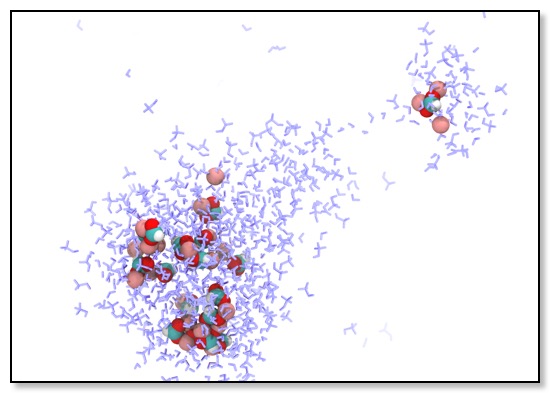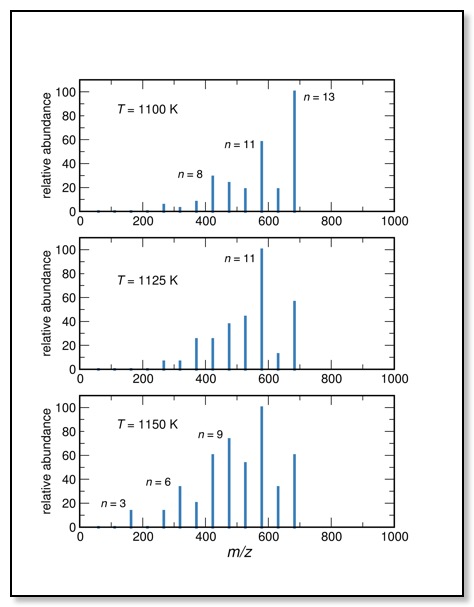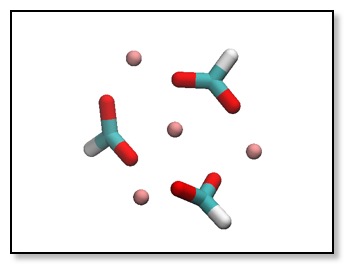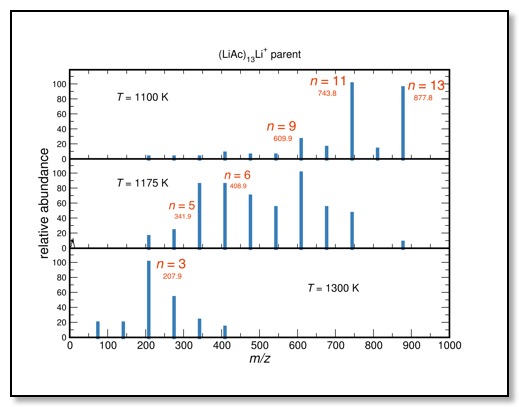Molecular Dynamics simulations of electrospray ionization processes
We investigate the evaporation and fission of lithium formate and lithium acetate solutions in the ESI process with molecular dynamics simulations, in order to investigate the predominant number and types of both positive and negative clusters, with the goal of supporting the presence of magic number clusters (MNC). We employ NAMD, which is able to implement the Lowe-Andersen thermostat, which is the only widely available thermostat that is both Galilean-invariant and is also able to prevent evaporative cooling. Solvent is either (TIP3P) water or 50-50 water and methanol. We implement a weak spherical boundary in a non-periodic system to account for long-ranged ionic forces without cutoffs, containing all the molecules in such a way that prevents calculation singularities. While excess vapor molecules are periodically eliminated from these systems in order to reduce the computational load, the system does not need to be re-coupled to a temperature bath in order to maintain the ESI temperature. Thus, these systems are able to run for tens of nanoseconds at a time. The simulations are controlled by scripts so that the run/extract vapor/run cycle can occur without intervention.

We are also investigating the thermal fragmentation of specific lithium formate and lithium acetate clusters.
Significant agreement with experimental ESI experiments has been found, including the observation of magic number clusters (MNC) in TDMD (thermal decomposition molecular dynamics) simulations. Additionally, we are able to observe neutral species, and it is found that the major neutral fragment is the (LiHCOO)2 dimer.
Reference: "Observation of Magic Number Clusters from Thermal Dissociation Molecular Dynamics Simulations of Lithium Formate Ionic Clusters", Jincheng Zhang, Bogdan Bogdanov, Andrew Parkins, and C. Michael McCallum. J. Phys. Chem. A, Web Published April 14, 2020.



Lithium acetate clusters show similar behavior.


Notice the difference at n=13, however. Lithium formate clusters at n = 12 and 13 show similar populations in the full ESI spectra, and the breakdown patterns are similar. However, lithium acetate clusters show a difference between n = 12 and 13. The 13-mer is not found experimentally to the same extent (compared with lithium formate), and the breakdown patterns between n=12 and 13 differ in significant ways.

